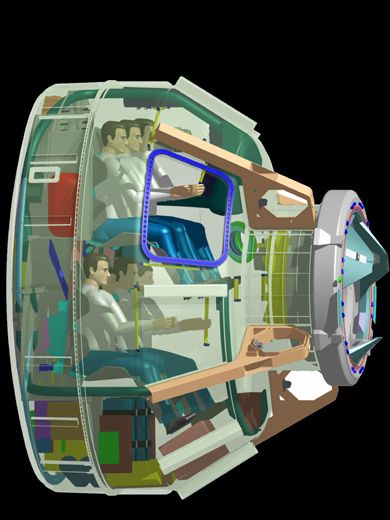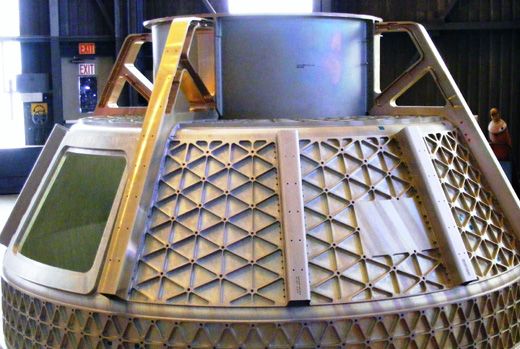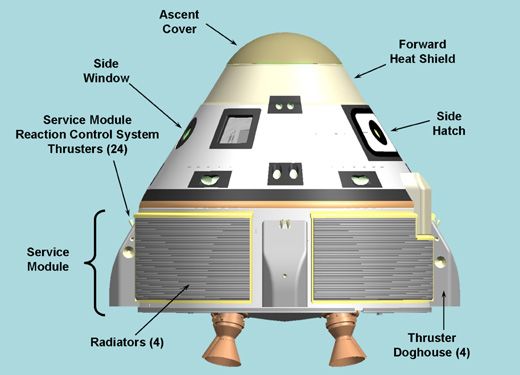Boeing’s New Spaceship
The aerospace giant teams up with the world’s only space tourism agency to ferry passengers to orbit.
/https://tf-cmsv2-smithsonianmag-media.s3.amazonaws.com/filer/CST-100-solo.jpg)
Aching to visit the International Space Station but don’t like the idea of spending months in Russia training to fly aboard a cramped three-man Soyuz? Boeing and its new partner Space Adventures may have a better way if plans gel for Boeing’s seven-seat Crew Space Transportation-100 (CST-100) capsule.
The new spacecraft, scheduled to be operational by 2015, is designed to be used not only by NASA astronauts but by any other potential customers Space Adventures can line up for a trip to the ISS. That includes individuals, companies, and other U.S. government agencies. No price per seat has been set, but the cost will be “competitive” with the $40 million Russia charged last year for a Soyuz ride, Boeing and Space Adventures officials said September 15 at Boeing’s offices in Arlington, Virginia.
“The price should be less emphasized than safety and reliability,” said Eric Anderson, co-founder and chairman of Space Adventures of Vienna, Virginia, which has so far sent seven people to the ISS on eight Soyuz flights (one person, Charles Simonyi, flew twice). “We’re still talking tens of millions of dollars. People ask me, when is it going to get cheaper, like $40,000? I always say it’ll never be $40,000 if it doesn’t start at $40 million. We’ll get there. The problem is, there’s not enough access to space.”
The training to fly on the new Boeing capsule will be “much less arduous,” Anderson said, than what is now required to ride on a Soyuz. For one thing, there won’t be a need for Russian language training, which takes several months in Russia. And the CST-100 will launch from Florida’s balmy Cape Canaveral atop an Atlas V, Delta IV, or SpaceX’s Falcon 9 rocket, rather than from the barren steppes of the Baikonur Cosmodrome in Kazakhstan.
Boeing is building the CST-100 with $18 million seed money provided under NASA’s Commercial Crew Development Space Act, and the company is counting on Congress continuing the funding and NASA eventually buying seats (the space agency plans to keep four astronauts aboard the ISS). “If we had to do this with Boeing [money] only, we wouldn’t be able to close the business case,” said John Elbon, the company’s vice president and program manager for commercial crew transportation systems. “How deep is the commercial space market? We won’t know until we get into it. This is an uncertain market.”
Anderson pointed out that although his company has sold every seat that was available on Soyuz, “we’re not sure how big the market is. We believe it can grow to a size that is very significant. The building of that market is something that benefits us all.” Space Adventures, he said, has had discussions not only with wealthy individuals, but pharmaceutical companies and foreign governments.
For now, the CST-100’s primary destination is the space station, but there may be other stops to make in low Earth orbit, Anderson suggested. He declined to elaborate, but one possibility is Bigelow Aerospace’s planned orbital commercial lab, sometimes referred to as a space “hotel.” Las Vegas-based Bigelow is another Boeing partner in the commercial crew program to service the ISS. NASA already has contracts with SpaceX and Orbital Sciences Corporation to ferry cargo to the station.
The CST-100 is designed to be docked at the station for up to six or seven months, Elbon said. It would carry 48 hours worth of air, food, and other supplies, so mission planners expect it would dock the same day it launched. Upon return to Earth, the spacecraft would use parachutes and air bags to land in White Sands, New Mexico. Each capsule would be designed for a minimum of 10 flights, with a turnaround time between launches of about six months to replace components such as the heat shield and parachutes and install a new service module.
Design work continues in Houston, Texas, and Huntington Beach, California with a team of 80 to 100 engineers, Elbon said. Pressure tests on a prototype are scheduled to begin September 18 in Las Vegas, with a docking simulation set for September 29 in Houston, and a systems design review on October 4. Four test flights, including one with a crew, are scheduled to occur in 2014, depending on funding from NASA.
Boeing plans to build a second test article, although the company has not decided how many capsules it would ultimately produce for actual missions. But Elbon sounded optimistic: “Becoming the commercial airplane company of space is a cool thing to work on.”


